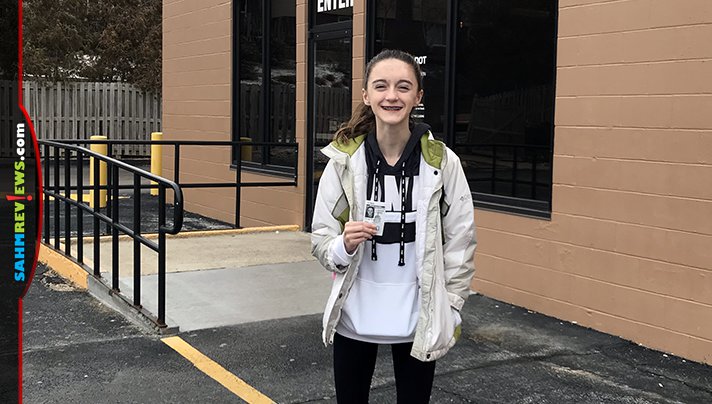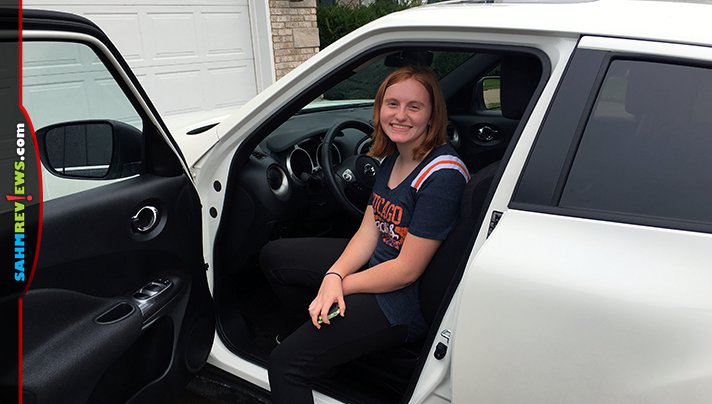How to Get Your Teen Ready for Driver’s Education

Last year at this time, I was faced with the realization that my daughters are growing up. While Madison wasn’t old enough to get her full driver’s license, she was authorized by the state to have a school permit. It’s a restricted license that students can get once they’ve successfully completed a certified driver’s education course. While it doesn’t give them full access to the roads, it does provide them with the opportunity to drive to and from school and school sanctioned activities between specified hours. As much as I hated it, I also really really liked not needing to run to the school quite as often. I simply put together some teen driver rules and accepted fate.

The school year went surprisingly well and Madison earned her full license after she turned 16. In the meantime, I once again had to face the reality that my daughters are growing up as I enrolled Kennedy in a summer driver’s education class. With limited time available, we didn’t give her the proper training in advance of the class starting. In hindsight, I realize that isn’t the way to go. Driver’s education isn’t designed to be a start-to-finish class on how to drive. They expect that your child has been behind the wheel with some practice prior to the first day of class. After some scolding from her instructor, we made time for her behind the wheel before her next scheduled drive date. It made all the difference. By the end of the third and final week of class, she was more comfortable behind the wheel and the instructor thanked us for giving the situation the attention it deserved. Upon chatting with some friends with students in the same predicament, I discovered I wasn’t alone. Many parents send their kids off to driver’s education with little or no experience. I decided to put together a list of what you can do do get your teen driver ready for Driver’s Education class.
Things to do to prepare your teen for driver’s education

Apply for a learner’s permit at the first available opportunity.
The age requirements vary from state to state so it’s best to read up on the laws for your jurisdiction. In some states, you must have your permit for a specified amount of time before you can apply for a full license. Even if you don’t have plans for your teen to drive, it’s a great way to teach responsibility and preparedness. Have them study for their permit so they are more likely to pass the test. The best way to minimize time at the DMV is to be prepared.

Teach your teen some automotive basics.
While they may not feel it’s important to know these things when they don’t have their license, it’s necessary information to know.
- Explain the different gauges on the dashboard.
- They don’t need to drive to learn how to fill the tank with gasoline… or clean the windshield at the gas station.
- Teach them about the different types of fuel and which ones your family vehicles use and why.
- Let them help fill the windshield wiper fluid or check the oil level.
- Show them how to adjust the seat and mirrors properly.
- Practice using the turn signal and lane change signal. If you’ve been driving for umpteen bajillion years, you may not recognize the subtly of how these are totally different features! You use them appropriately without thinking, but a new driver needs to know the difference.
- Turn on and adjust the wiper speeds. Let them figure out how to spray both the front and rear windshields.
- Teach them about automotive care including maintenance and cleaning.
- Hand them the vehicle owner’s manual.

Give your teenager drive time.
This seems counter-intuitive to the idea of driver’s education. I kept telling myself that the program instructors are knowledgeable about common mistakes and know what to watch for. Plus, kids are more likely to listen to a teacher than their parents or at least they are less likely to be annoyed by suggestions on how to improve. But there’s more to driving than just, well, driving. It’s a whole environment and way of thinking. Giving your teenager time behind the wheel before they start driver’s education may sound like putting the cart before the horse, but it’s really such an obvious answer. They need to get some experience so the tips the instructor offers have value.
- Let your teenager start the car.
- Drive to an empty parking lot (schools during the summers are perfect) and have your teen become familiar with the brake and gas pedals.
- Have your teenager drive around the parking lot, treating it like regular roads. This helps them get used to stopping, starting, using turn signals and the general feel of the vehicle.
- Practice driving around the block. It’s familiar territory so that should help with the comfort level.
- Practice at different times of day.
- Teach them about vehicle emergency kits, how to change a tire and the proper way to jumpstart a dead battery.
Encourage your teen passengers to put their phones down.
You’re probably laughing right now that I would offer such an insane piece of advice. I am fully aware of how ridiculous it is to ask any teenager to step away from their device. However, when they start driving, they need to be familiar with where they are going. Every once in a while, ask them for directions on how to get to common destinations such as McDonald’s, Walmart, sports practices, music lessons, the movie theater, family members’ houses, etc. When they’re finally driving, they will be more prepared with the knowledge that in x number of blocks, they’ll need to be in the other lane to turn.
Ask (and field) questions while driving.
Being bombarded with so much new information can be overwhelming. Introduce a variety of road-related details whenever possible.
- There isn’t an age limit to when you can learn what different signs mean.
- Lines, lines everywhere. Solid, dotted, dashed, white, yellow, whatever. Explain the meanings.
- Discuss right-of-way as well as blind spots.
- Explain the importance of speed limits. Going too fast is dangerous, but going too slow can be also!
Just like anything else, preparing to drive a car requires work, practice and information. While driver’s education is going to help them understand a lot of what they need to know, if your teen is prepared for driver’s ed before walking in the door then they’ll get a whole lot more out of the experience.
How old were you when you learned to drive?








Good info here! There’s a lot to know to get started and having the basics down helps both the kids and the parents
I was 18, actually. Not sure why I waited, but I know that we didn’t have the money for driver’s ed….
Great info and tips!
Even though I learned how to drive from a very young age, for some reason, after getting my permit at 16, i waited until i was in my 20’s to get my actually go for it. I’m not really sure why.
I don’t have anything else to add to this list, but these tips will come in handy in a few years!
Tip: First time in the passenger seat with your kid behind the wheel – buckle up and hold a pillow in your lap. Lol
Actually do some instruction before putting them in the driver seat? My dad had nobody to blame but himself….
16
I learned to drive through my schools driver’s ed program. My mom was too nervous of a driver to teach me. These are very helpful tips.
I learned to drive in school at 16 .
The first tip would be to buckle up! Please add that to the list.
4 Rs for parallel parking. Pull up on the Right with the Right* Blinker on, Turn wheel all the way to the right* Rearview* mirror all the way down, and put your car in *Reverse.
Parallel parking!!